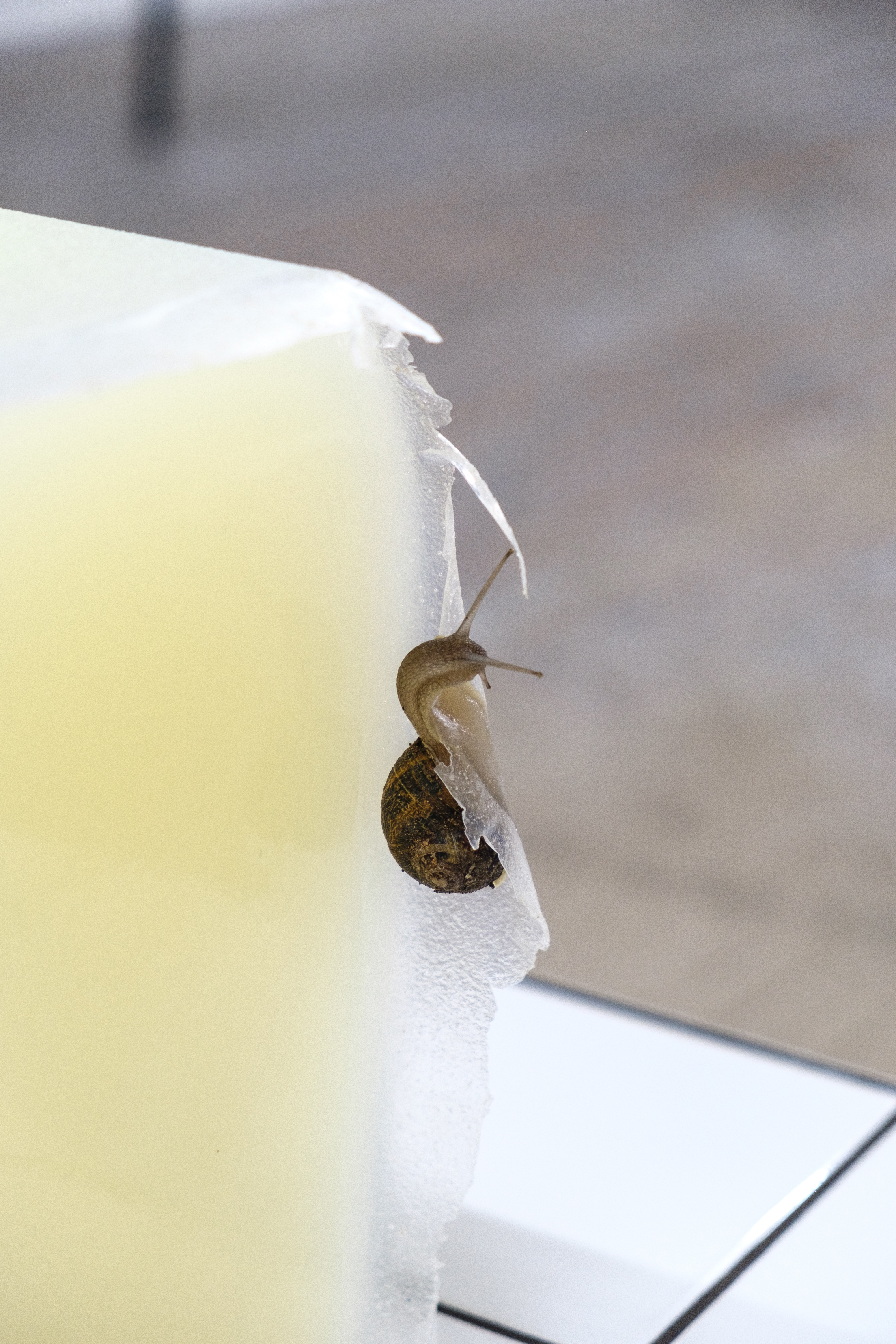Soft-Shell, 2023
translucent silicone rubber, condensation cure silicone, white pigment, tiles, adhesive, plywood & snails.
Soft-Shell is a site-specific work that takes casts of architectural features (a sink and gutter-way/wet-room cove skirting) in an empty chapel and mortuary. The piece functions as a relic, embalming or skinning of the space, which was used for the storage and preservation of human bodies before their disposal. The use of silicon rubber is purposeful in Soft-Shell: a material used for medical implants, procedures, and funereal practices. The tiled structure (inferring both autopsy and tomb) offers an interface with cooling temperatures, as analogous with the process of algor mortis. It also provides a seemingly impermeable barrier, one which is water-tight as to contain seepage. Here, parallels can be made between the plumbing of the mortuary (the basins and pipes), and the body which, after death, becomes liquescent, as ‘slippage’ of our skin begins, and tissues percolate from our orifices. Once passed, we collectively drain and pool, participating in a hermaphroditic condition that sees no separation of matter: no partition of the human and non-human, along with other reductive binaries. In recognition, Sharples co-operates with a walk of snails, hermaphroditic animals, in support of this trans-formation and material exchange. In nod of the scalloped shell symbolising re-birth in Christianity, Sharples offers another emblem of the shelled gastropod as to signify our transfused constitution.
Shown as part of the exhibition & symposium An Elastic Continuum at S1 Artspace, Sheffield.
Photographs: James Clarkson.
translucent silicone rubber, condensation cure silicone, white pigment, tiles, adhesive, plywood & snails.
Soft-Shell is a site-specific work that takes casts of architectural features (a sink and gutter-way/wet-room cove skirting) in an empty chapel and mortuary. The piece functions as a relic, embalming or skinning of the space, which was used for the storage and preservation of human bodies before their disposal. The use of silicon rubber is purposeful in Soft-Shell: a material used for medical implants, procedures, and funereal practices. The tiled structure (inferring both autopsy and tomb) offers an interface with cooling temperatures, as analogous with the process of algor mortis. It also provides a seemingly impermeable barrier, one which is water-tight as to contain seepage. Here, parallels can be made between the plumbing of the mortuary (the basins and pipes), and the body which, after death, becomes liquescent, as ‘slippage’ of our skin begins, and tissues percolate from our orifices. Once passed, we collectively drain and pool, participating in a hermaphroditic condition that sees no separation of matter: no partition of the human and non-human, along with other reductive binaries. In recognition, Sharples co-operates with a walk of snails, hermaphroditic animals, in support of this trans-formation and material exchange. In nod of the scalloped shell symbolising re-birth in Christianity, Sharples offers another emblem of the shelled gastropod as to signify our transfused constitution.
Shown as part of the exhibition & symposium An Elastic Continuum at S1 Artspace, Sheffield.
Photographs: James Clarkson.




